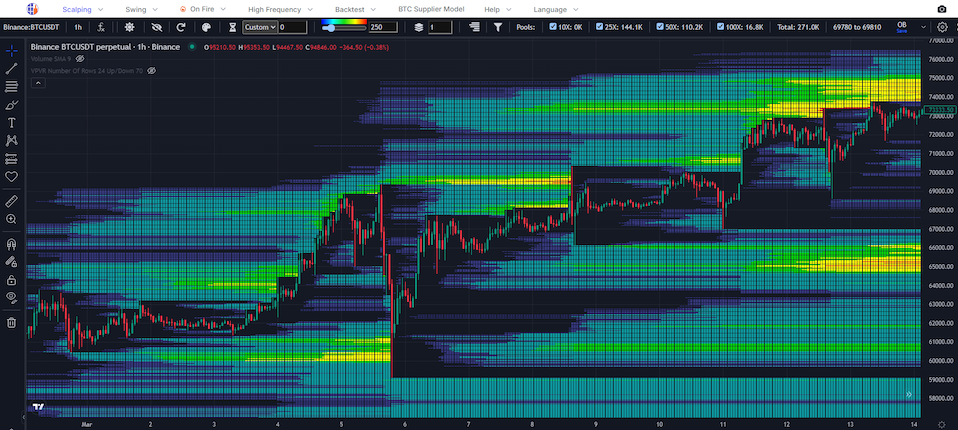In the high-stakes arena of financial trading, information is the ultimate currency. The ability to access and interpret market data quickly and accurately can be the difference between a profitable trade and a costly misstep. While historical data provides valuable context and insights into past price movements, real-time data offers a crucial window into the present dynamics of supply and demand. Traders who can effectively leverage real-time information gain a significant advantage, allowing them to react swiftly to changing market conditions, identify emerging opportunities, and manage risk more effectively. In this fast-paced environment, tools that can distill complex real-time data into easily digestible formats are invaluable assets for any serious trader.
Decoding the Order Book: Understanding the Foundation of Market Depth
The bedrock of real-time market data lies in the order book, an electronic list of buy and sell orders for a specific asset, organised by price level. The order book reveals the current intentions of market participants, showing the quantities of bids (buy orders) and asks (sell orders) waiting to be executed at various price points. This information constitutes market depth, indicating the liquidity available at different price levels. A deep order book, with significant volume on both the bid and ask sides, suggests that large orders can be execute without causing substantial price fluctuations. Conversely, a shallow order book indicates lower liquidity, where even relatively small orders can lead to more significant price movements. Understanding how to interpret the order book is fundamental to comprehending the immediate supply and demand dynamics of an asset.
Heatmaps Unveiled: A Visual Revolution in Trading Data
While the raw data of the order book provides essential information, its sheer volume and complexity can make it challenging to interpret quickly, especially in fast-moving markets. This is where heatmaps emerge as a revolutionary tool, transforming the numerical data of the order book into a visually intuitive representation. A trading heatmap uses colour intensity to depict the concentration of buy and sell orders at different price levels in real-time. Warmer colours, such as reds and yellows, typically indicate a higher volume of orders, while cooler colours, like blues and greens, suggest lower volume. Platforms like Bookmap are renowned for their sophisticated heatmap functionalities, providing traders with a dynamic and easily understandable view of market depth. This visual approach allows traders to instantly identify areas of significant liquidity and potential price congestion or acceleration.
Beyond the Numbers: The Intuitive Power of Heatmap Visualisation
The primary advantage of heatmaps over traditional order book views lies in their ability to convey a vast amount of information at a glance. Instead of having to constantly scan and interpret rows of numbers, traders can instantly identify key liquidity levels and potential trading opportunities based on the colour intensity on the heatmap. This intuitive visualisation allows for faster and more efficient decision-making, particularly crucial for short-term traders operating in volatile markets. The human brain is naturally adept at processing visual information, and heatmaps leverage this strength to provide a more immediate and comprehensive understanding of market depth. This visual clarity can help traders filter out noise and focus on the most relevant information, leading to more confident and timely trading actions.
Spotting Opportunities in the Flow: Real-Time Applications of Heatmaps
The dynamic nature of heatmaps allows traders to identify various real-time trading opportunities. One common application is spotting large blocks of liquidity acting as potential support or resistance. A significant build-up of intensely coloured areas on the bid side might indicate strong buying interest that could halt a downward price movement. Conversely, a similar concentration on the ask side could signal strong selling pressure likely to cap an upward move. Traders can also watch for the appearance and disappearance of liquidity. A sudden thinning of the heatmap on one side could precede a rapid price move in that direction, as there are fewer orders to absorb incoming volume. Furthermore, heatmaps can help identify potential “iceberg orders” – large hidden orders that only reveal a small portion of their size at any given time. A persistent, intense colour at a specific price level, even as visible orders are filled, can suggest the presence of such a large hidden order.
Tailoring Your Approach: Heatmaps for Different Trading Styles
The versatility of heatmaps makes them a valuable tool for various trading styles. Scalpers, who aim to profit from small price movements, can use heatmaps to identify fleeting imbalances in supply and demand and execute trades based on immediate order flow dynamics. Day traders can utilise heatmaps to identify key support and resistance levels throughout the trading day, as well as to gauge the strength of intraday trends. Swing traders, while typically focusing on longer timeframes, can still benefit from using heatmaps on shorter timeframes to fine-tune their entry and exit points within a broader swing trade setup. The ability to see real-time liquidity changes provides valuable context regardless of the holding period. For instance, a swing trader might use a daily chart for their overall analysis but consult a heatmap on a 15-minute chart to find an optimal entry point when initiating a position.
Executing with Precision: Minimising Slippage and Optimising Entries
Heatmaps can also play a crucial role in improving order execution. By visualising the liquidity available at different price levels, traders can choose entry and exit points where there is sufficient volume to facilitate their trades without significant slippage. Slippage occurs when an order is filled at a price different from the intended price, often due to a lack of available liquidity. By placing orders at price levels with strong heatmap presence, traders increase the likelihood of their orders being filled at or near their desired price. Furthermore, heatmaps can help traders avoid placing orders in areas of thin liquidity where they might be more susceptible to being “picked off” or experiencing significant price impact. This enhanced awareness of real-time liquidity can lead to more efficient and cost-effective order execution.
The Dynamic Edge: Adapting Your Strategy with Real-Time Insights
The real-time nature of heatmaps provides traders with a dynamic edge in the market. Unlike static technical indicators that lag behind price action, heatmaps constantly update to reflect the ever-changing landscape of the order book. This allows traders to adapt their strategies and make adjustments based on the most current market conditions. For example, if a trader anticipates a breakout at a particular price level, they can monitor the heatmap for a build-up of aggressive buying or selling pressure as price approaches that level. A strong intensification of colour in the direction of the anticipated breakout can provide confirmation and increase the trader’s confidence in their decision. Conversely, a lack of supporting liquidity on the heatmap might suggest that the breakout is unlikely to succeed, prompting the trader to reconsider their position.
Your Window into the Market’s Soul: Trading with Enhanced Awareness
Forget staring at static lines and lagging indicators, hoping for a glimpse into the market’s next move. Trading with heatmaps is akin to having a direct line to the collective intentions of market participants, visualised in a dynamic and intuitive format. You’re no longer just reacting to price; you’re anticipating its journey based on the real-time ebb and flow of liquidity. This isn’t about predicting the future with certainty, but rather about gaining a profound understanding of the present, empowering you to navigate the market’s currents with enhanced awareness and make decisions rooted in the tangible reality of buy and sell orders. So, embrace the heat, decipher the colours, and unlock a new dimension of market understanding that places real-time depth squarely at your fingertips.








































